Bundesliga side Hertha Berlin claim big goals for the future. Under their new head-coach Jürgen Klinsmann, Berlin want to become one of Germany’s most successful clubs challenging for the Champions League. Whereas it is obvious that this will not be achieved this season, it remains uncertain whether reaching their high goals is possible in the upcoming seasons.
In our tactical analysis, we take a closer look at Hertha Berlin’s playing style and the tactical changes under Klinsmann.
Defensive-minded approach
Since Klinsmann took over Berlin, there were a few changes in their setup and style of play noticeable. Especially the defensive-minded setup enabled them to concede fewer goals than before. In Hertha’s six games under Klinsmann, they conceded 1.33 goals per game although playing against attacking-minded teams like Dortmund and Bayern Munich. In comparison, under former coach Ante Covic Berlin conceded 2.08 goals per game.
During the defensive phase of the game, Berlin set up with a back-four system. Either defending in a 4-5-1 or a 4-4-2 out of possession, Berlin defend within their own half and start to press at the halfway-line.
One of Berlin’s strengths is their vertical compactness when defending. Klinsmann’s side offer only few spaces between the lines which forces the opposition into horizontal ball circulation rather than vertical combinations.
To defend the space behind the backline, their defenders take in sideways positions so that they are ready to defend chipped balls behind the last line or to move out in case of a pass played behind the midfield line.
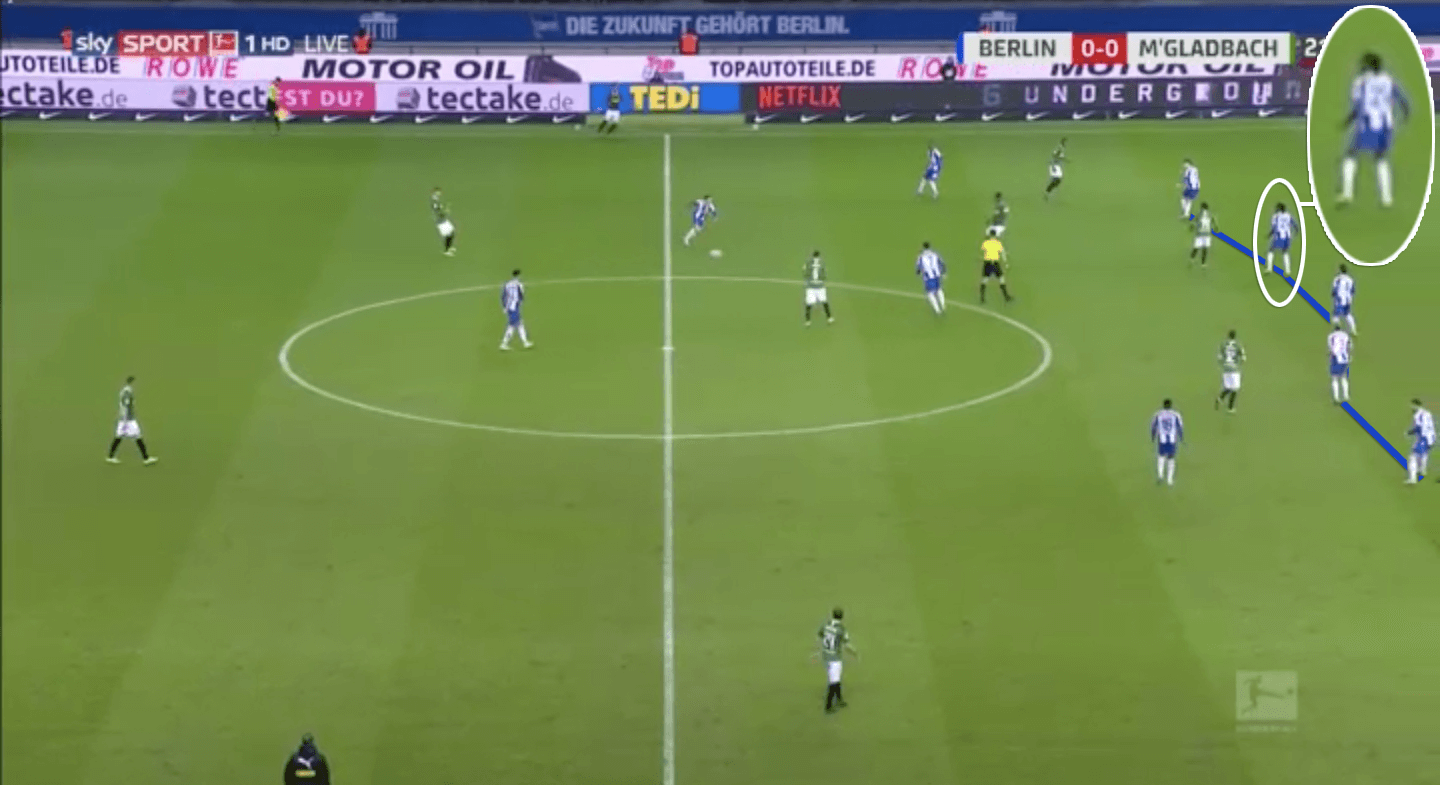
Being forced to defend even closer to their own goal, Berlin’s low-block firstly covers the central area in front of their box (Zone 14).
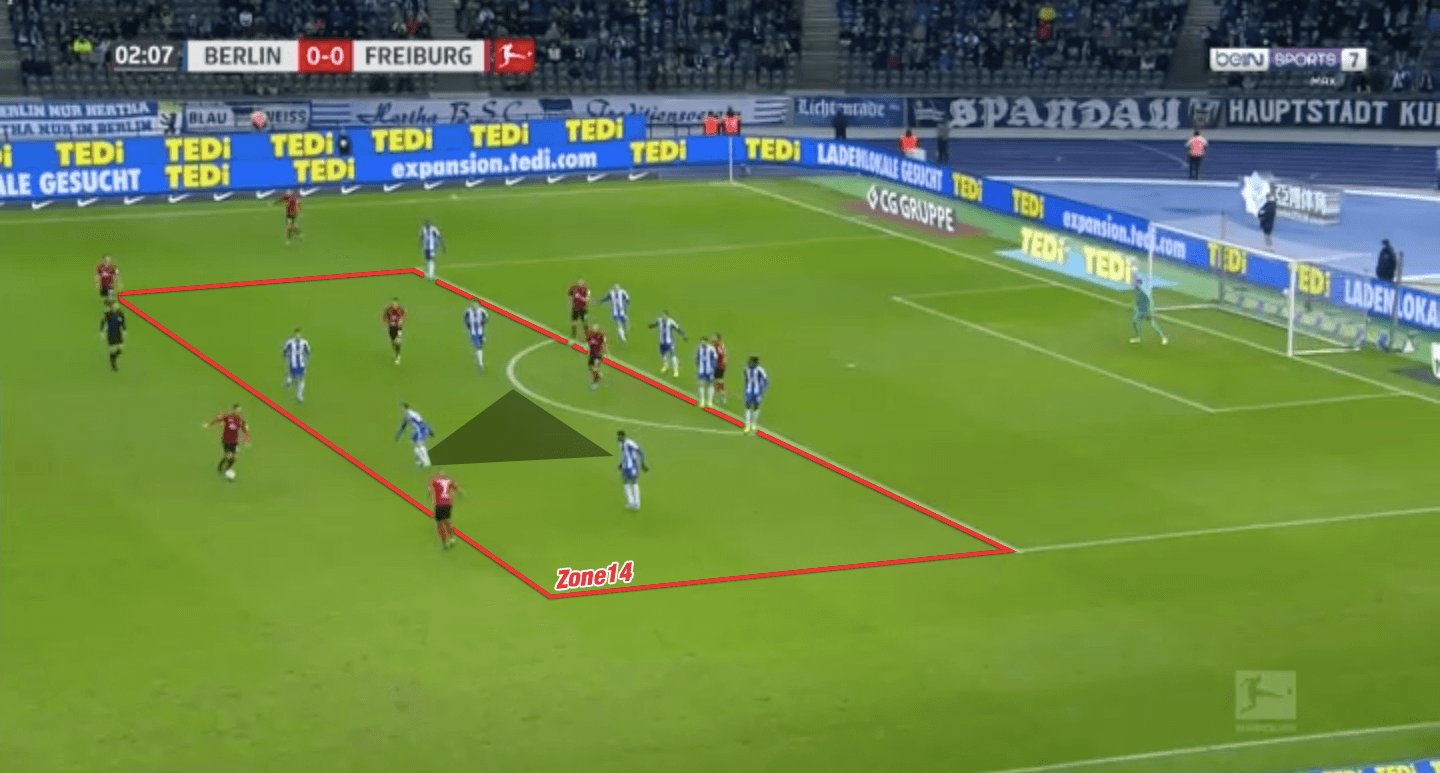
This, again, prevents the opposition from playing between the lines and, in addition to that, makes it far more difficult to play through passes. As a consequence, Berlin’s opponents will need to move the ball wide. On the flank, Berlin try to outnumber the opposition. Meanwhile, the defenders can take in positions within the penalty area to defend a possible cross.
Especially against sides with high attacking full-backs, Berlin’s wingers need to defend deeper to ensure a numerical superiority within the backline and to support the full-back on the wing.
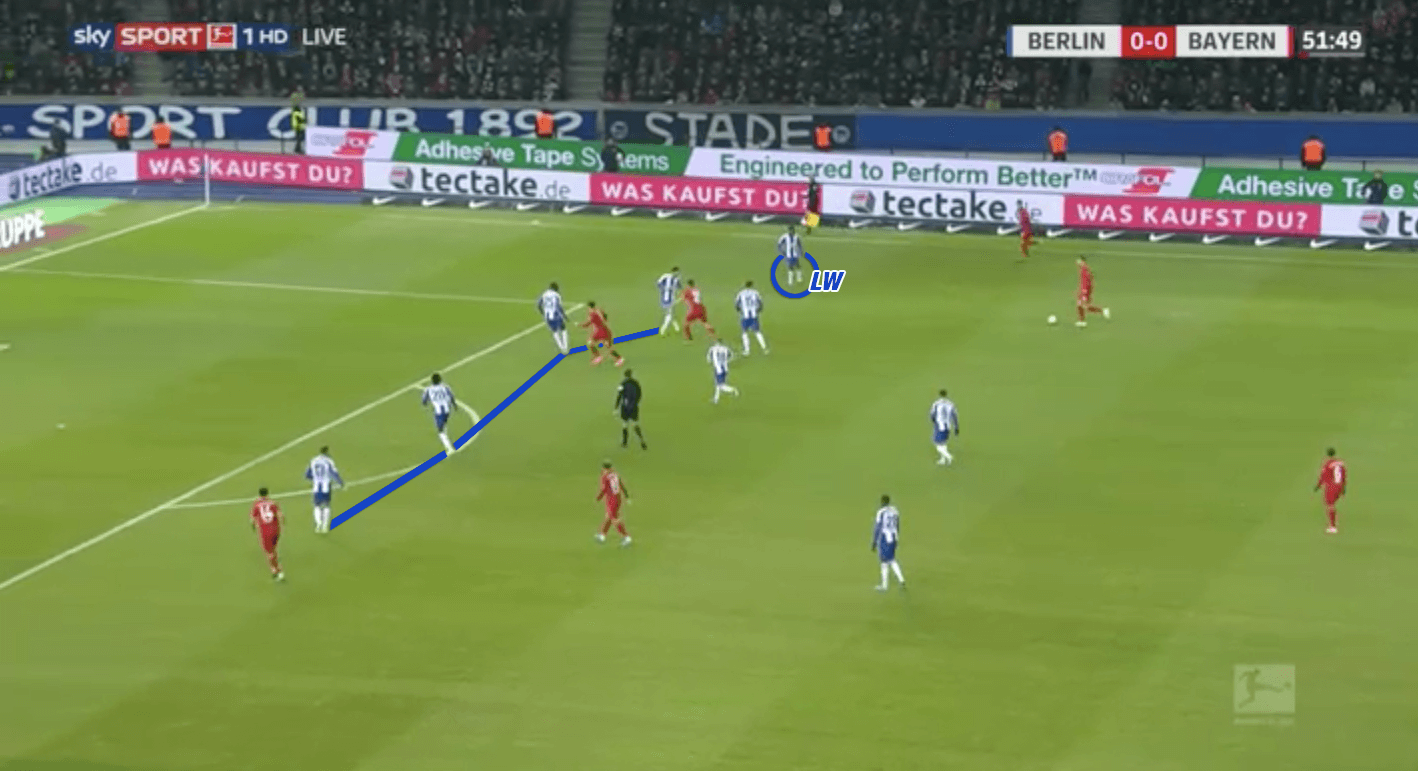
As a negative side effect, however, this increases the distance towards the opposition goal in case of a counter-attack. But as one of the wingers mostly stays further up the pitch, Berlin still possess at least two options up front to start a counter-attack.
Hertha’s threatening counter-attacks
Klinsmann’s approach seems to be mainly built around compact defending and fast counter-attacking. With the help of a 4-2-3-1 or 4-1-4-1 formation, Klinsmann’s attempt is to break opposition lines after regaining possession as fast as possible while having enough players up front to create promising opportunities.
On the break, the attacking players search for the fastest way to the goal and occupy the opposition penalty area as soon as possible. With their wingers who possess 1v1 dribbling abilities, they try to get behind the opposition full-back to send in a cross. While striker Davie Selke and the ball far winger get into positions near the 6-yard box, their central advanced midfielders offer a back pass options at the edge of the penalty area.
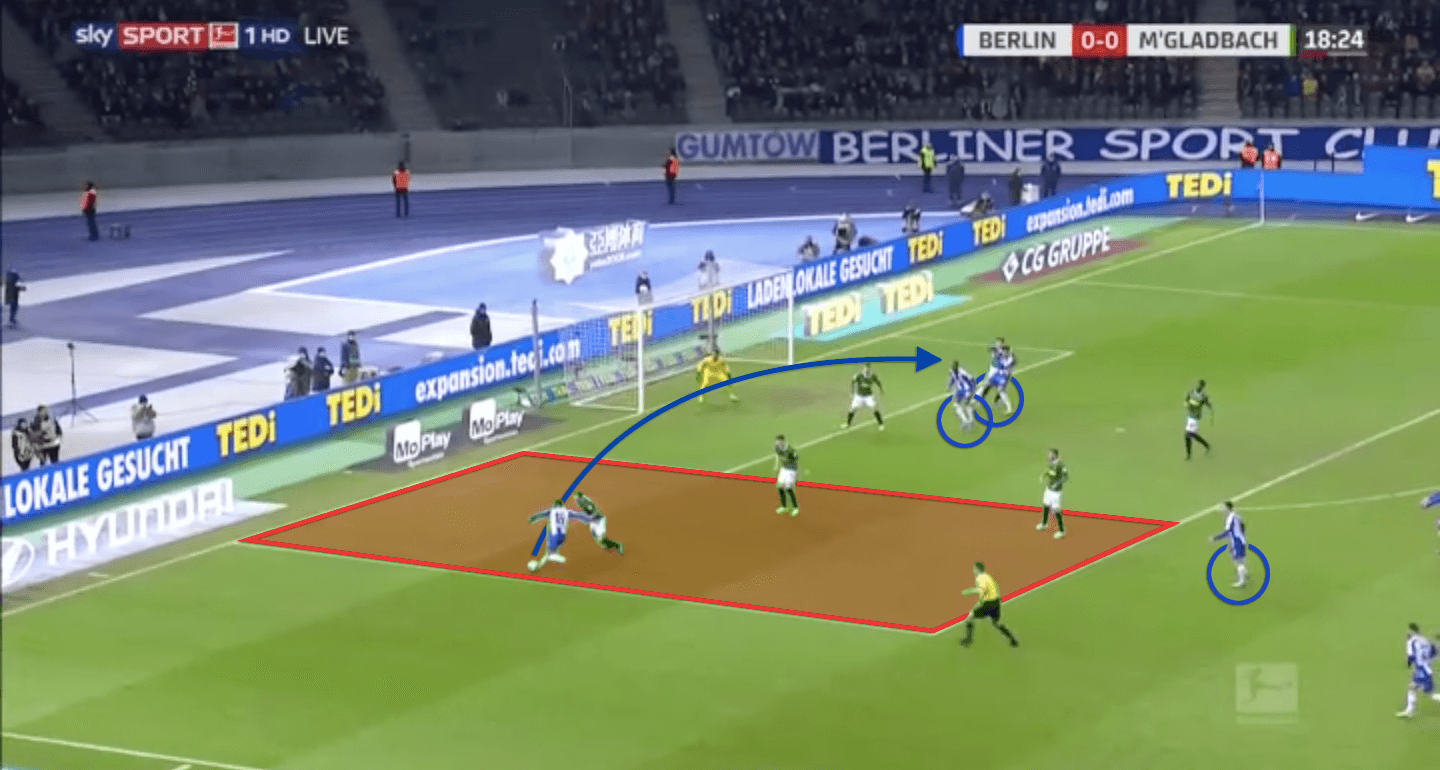
Above, one can see Hertha’s favoured approach to create chances. After the creation of a 1v1 situation in the assist zone, Berlin send in a cross towards the striker and the ball far winger.
During counter-attacks, these crosses are more difficult to defend than during possession phases since the defenders are often still in the process of moving into the right positions. Utilising this dynamism, Berlin can bring their attackers into finishing positions.
Berlin’s attacking structure
During the attacking phase, Berlin’s double pivot will use a diagonal staggering to ensure one of the two to move into a higher position while the other provides a short passing option for the centre-backs.
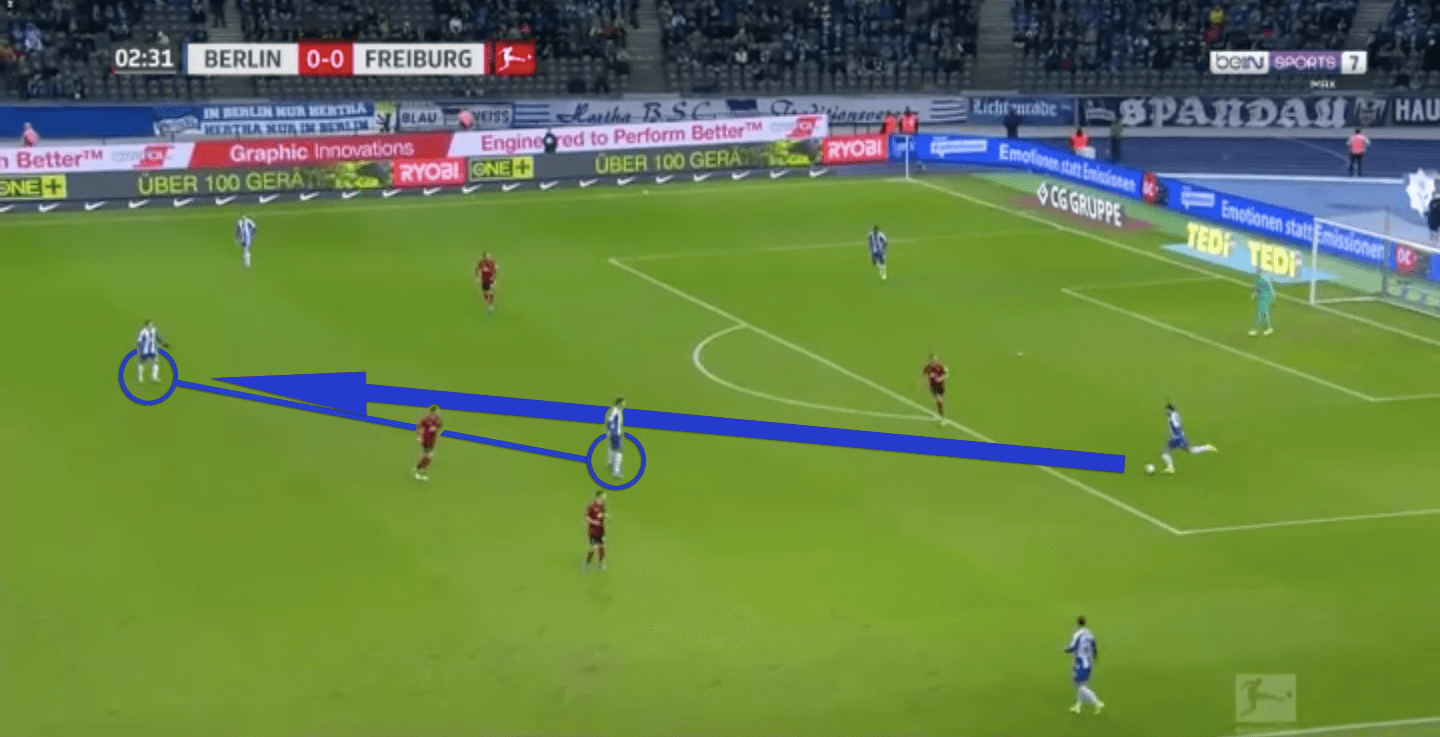
If they can create a central passing option, Berlin like to progress up the pitch through the centre. If this is not the case though, Berlin use deep full-backs and situationally play long balls under pressure.
In wide areas, Berlin’s wingers and full-backs are rarely positioned in the same lane. While one moves inside to occupy the half-space, the other one provides width on the flank.
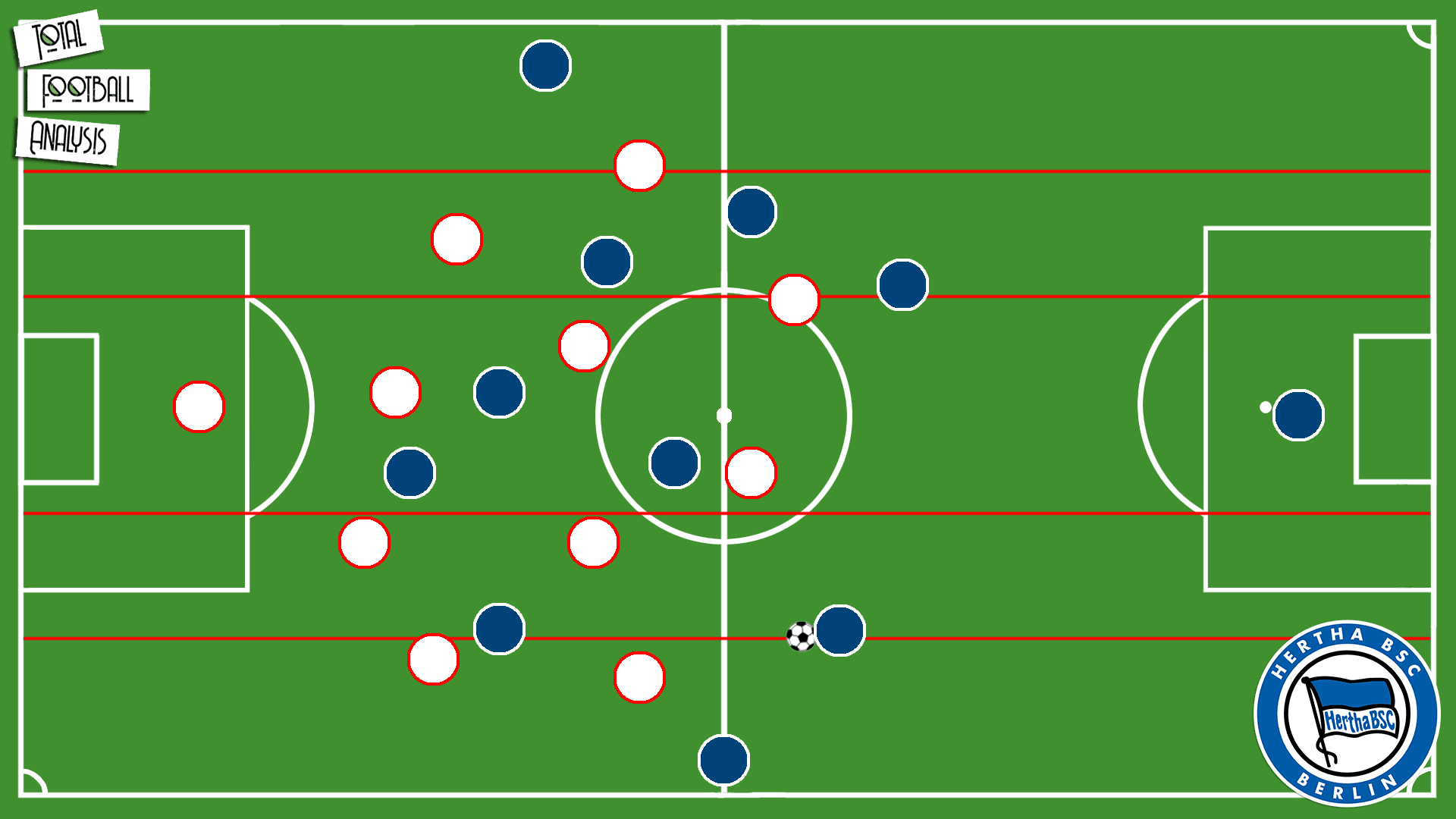
This creates triangular structures in possession and often opens up diagonal passing lanes. Furthermore, it keeps Hertha’s shape more compact and allows for fast defensive transitions.
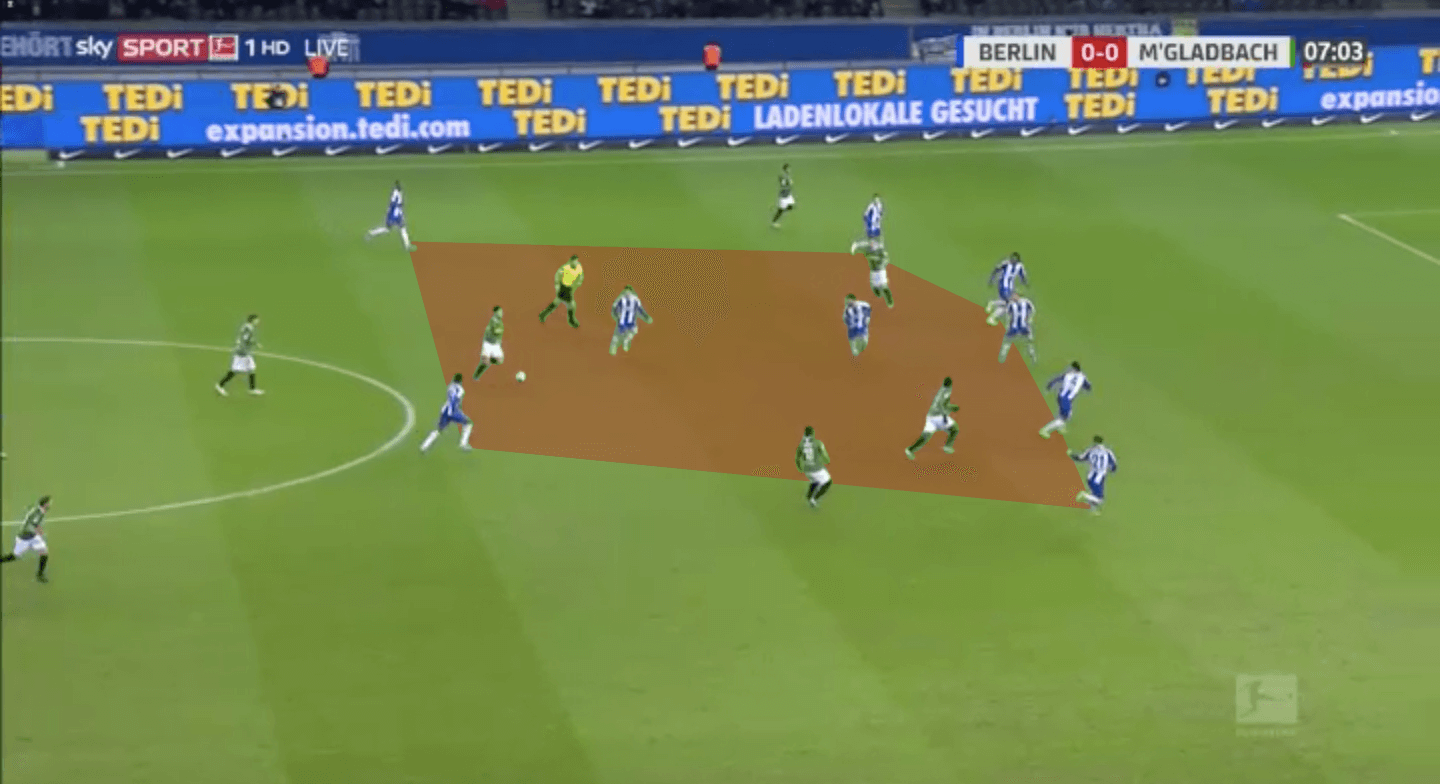
As one can see above, Hertha’s defensive cover is sufficient to quickly decrease space for an opposition counter-attack within their half.
Prospects
Since there were only six Bundesliga games played under the German coach, we have to wait to make more accurate points on the future of Berlin. Nevertheless, it can be said that Berlin seem to have found a fitting approach in the short term with their tactics to defend deep and counter-attack once regaining possession.
What remains to be seen, though, is whether they can also create that much offensive output against Bundesliga sides which take less initiative than Berlin’s recent opponents. At the moment, Berlin seem incapable of dominating games over the period of a whole season.
Conclusion
All in all, as shown in our analysis, there are several things that changed since Klinsmann took over Hertha Berlin. With their counter-attacking philosophy, Hertha can make the best of their fast attacking department.
However, at the moment Berlin are far away from becoming a Bundesliga top side. And whether investing money instead of banking on own talents is more successful remains to be seen. Especially since the main foundation of the latest rise of a Bundesliga club in RB Leipzig was the development of younger players into top players.





Comments